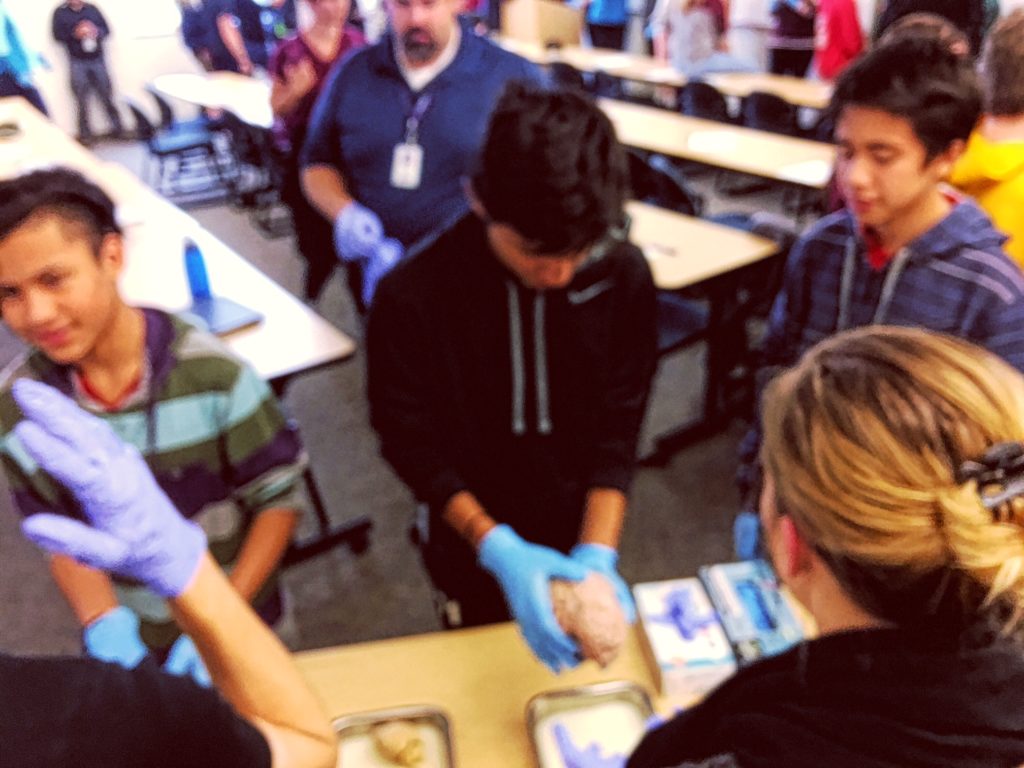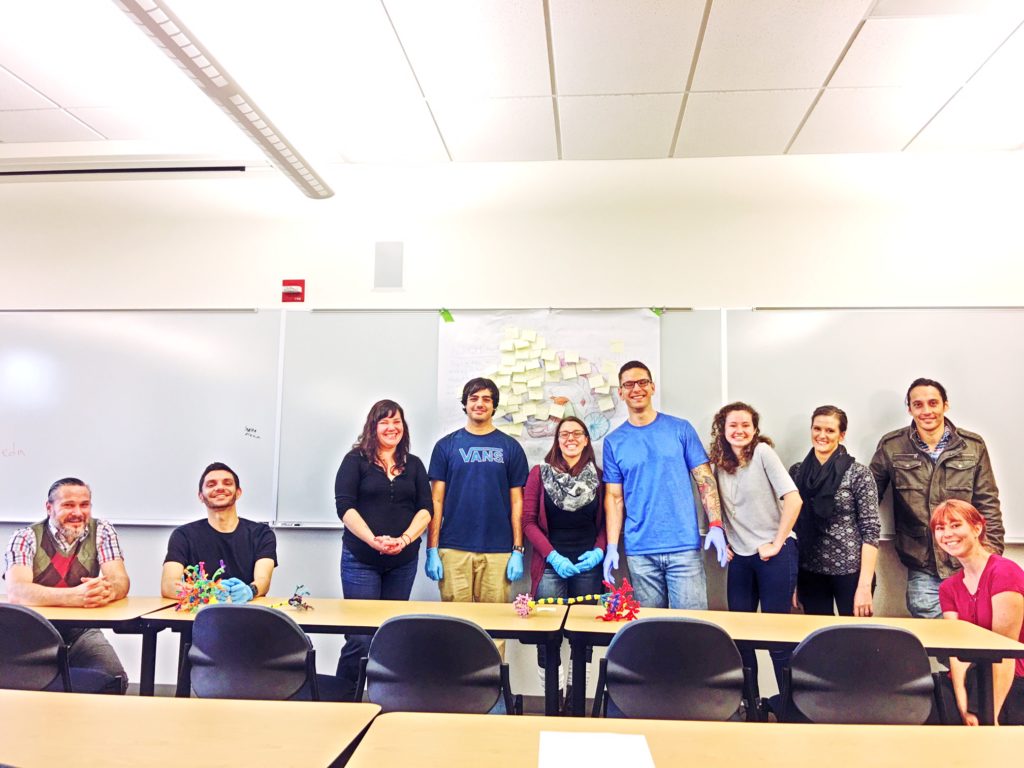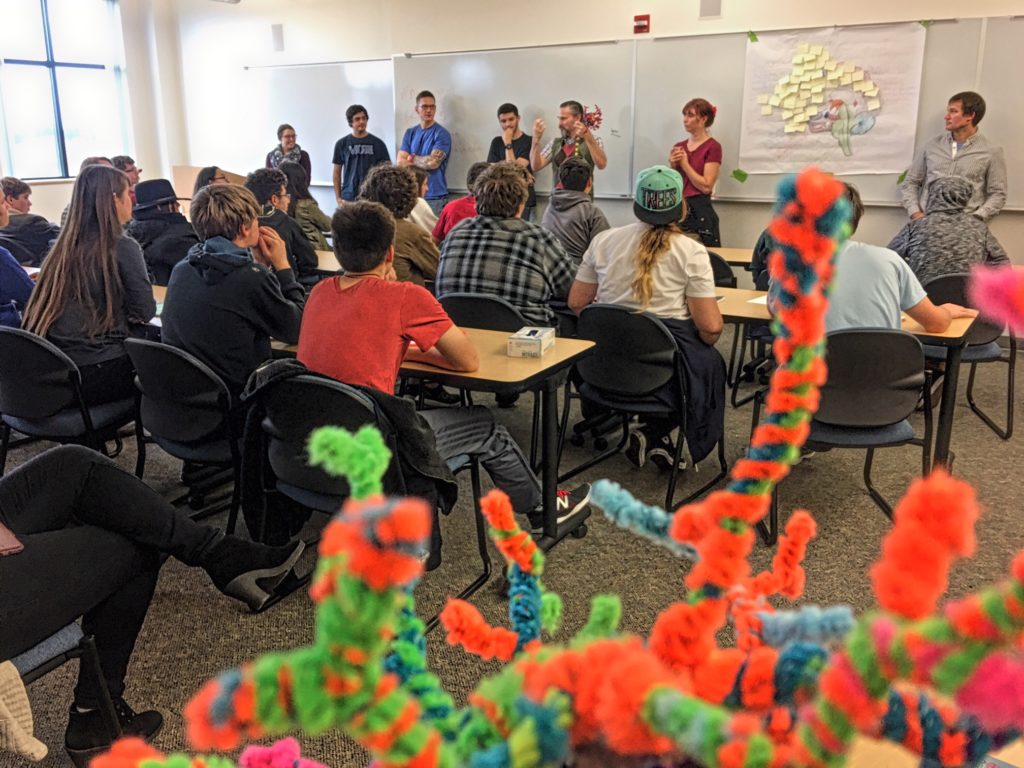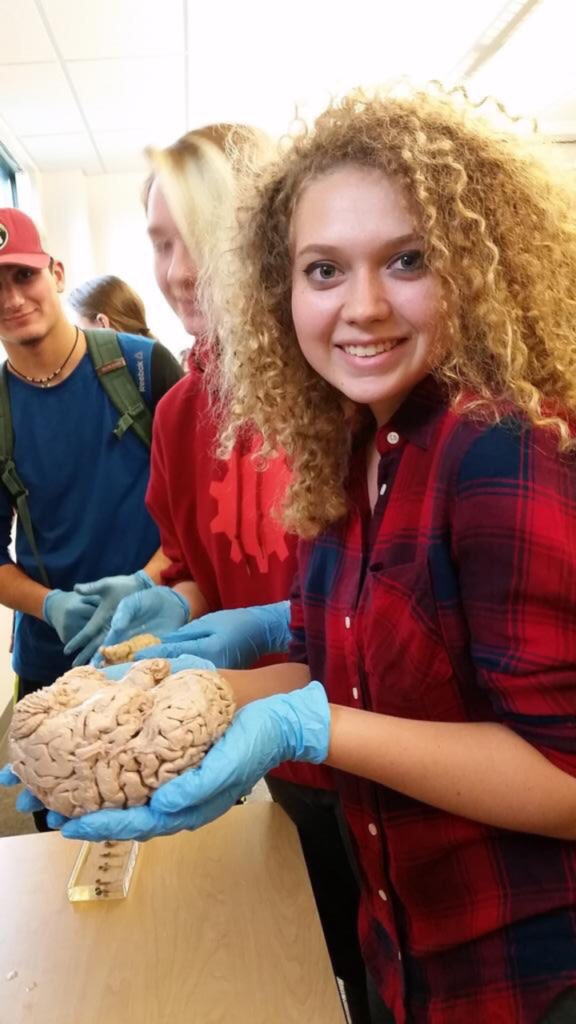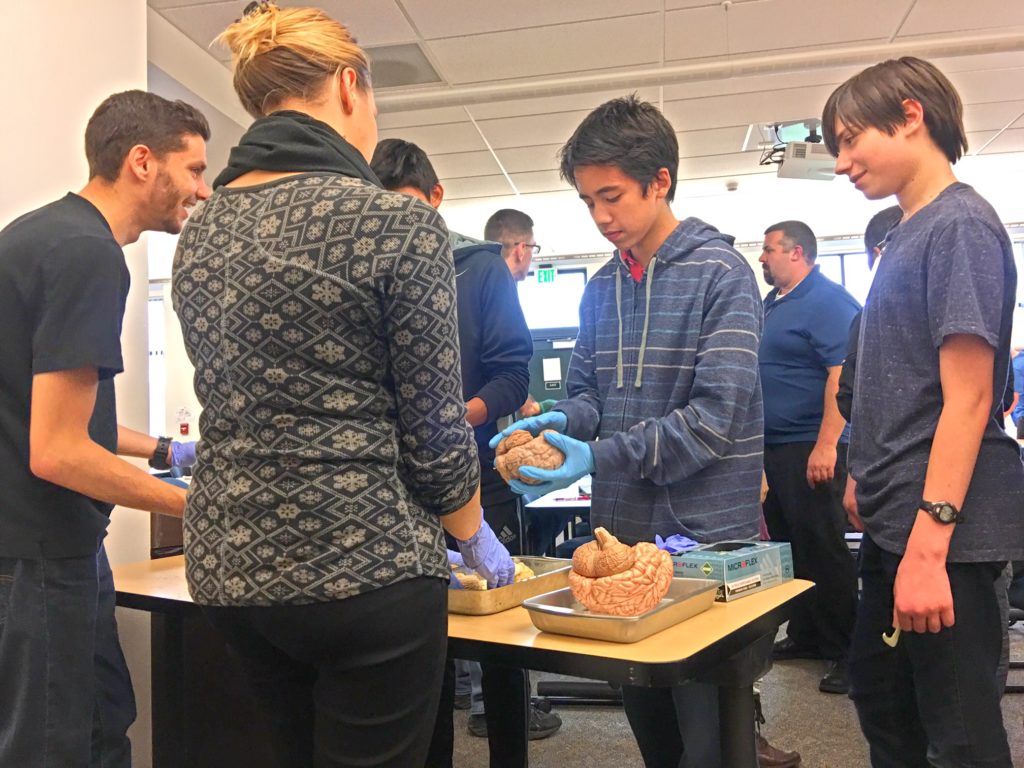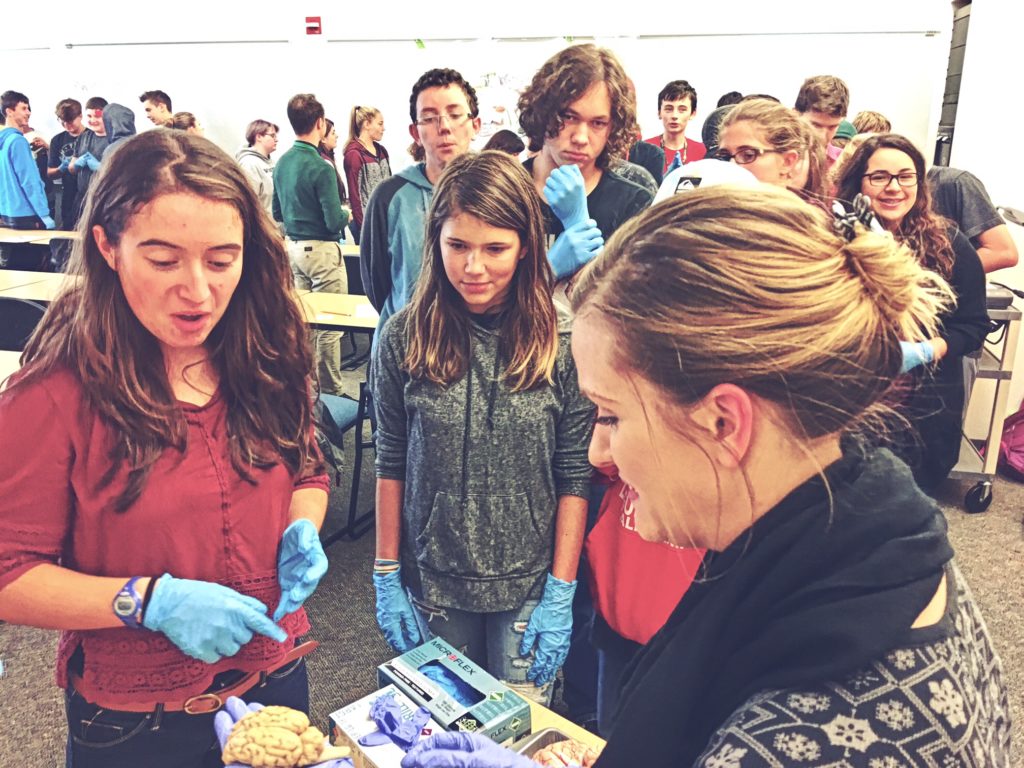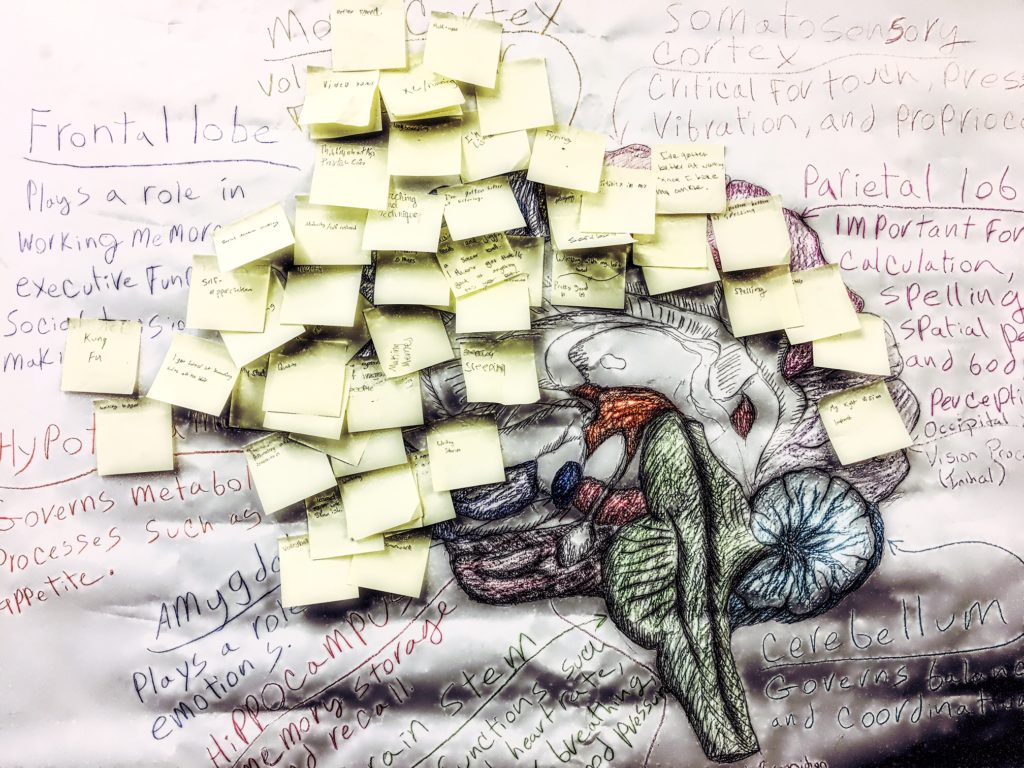This week we introduced our depolarizing crowd of Noggin volunteers to 160 high school students at iTech Prep, a Vancouver public school that takes a welcome and familiar STEAM approach to education, “integrating art and design principles into research and problem-based learning…”
Our volunteers included Wendy McMakin and Andrew Stanley from Psychology at Portland State University, and Zander Eisenhower, Nick Dunn, Mary Nelson, Christina Williams, Kim Engeln, Matthew Carlisle, Joey Seuferling, and Maria Honsowetz from Neuroscience at WSU Vancouver!
Many of these undergraduates are enrolled in Perception/Art + Brain classes at WSU Vancouver and PSU, where they explore the neurophysiology of vision, audition, somatosensation, olfaction, and other senses, and also create visual and tactile works that further their understanding of how these neural systems underlie complex, multi-sensory perception…
Students at iTech also regularly explore STEM concepts through creative art and design projects. We enjoyed a terrific discussion with one student who combined his interests in the brain and the physics of motion to build a football helmet with an insulating, shock absorbing layer of gel, while a group of engineering students are now busy creating their own structurally accurate cerebrum!
We spent some time introducing ourselves (there were twelve of us!), and emphasized that undergraduate and graduate programs in neuroscience and psychology are both available and accessible. We noted that our volunteers are an excellent resource for learning more about how to get involved…
Photo above by iTech Prep
We answered many insightful questions about sleep, perception, brain development and social decision making, and explained how different regions of the brain do different things. These students were very well-prepared! It is exciting to see neuroscience material previously introduced at the college level being offered to students at earlier and earlier ages. After almost five years of volunteer STEAM outreach in the Pacific Northwest, we know that evidence-based knowledge of how brain structure relates to behavior is both compelling and actionable information for teenagers. A user’s manual – to you – can really help.
Photo above by iTech Prep
We also asked students to think back on the past twelve months, and identify a skill or ability where they’d experienced improvement. Adolescence is a time of tumultuous brain and behavioral development, and this exercise encourages students to take a longer view, and reflect on some positive changes…
Students wrote down their skills on post it notes (including better performance in soccer, video games and kung fu, more self-control over social media), and then spoke with our volunteers about where networks in their brains were changing in ways that allowed for their felt improvements…
As the post it notes accumulated, a pattern emerged…
With the great bulk of these behavioral changes depending on changing networks in the frontal lobes!
EXPLORE MORE: Adolescent Maturity and the Brain: The Promise and Pitfalls of Neuroscience Research in Adolescent Health Policy
And of course, iTech students got to examine frontal lobes – and other brain regions – up close!
Photo above by iTech Prep
Many thanks to Nathalie Powell, and the teachers and students at iTech for welcoming us to class! We look forward to returning next week to enjoy more discussions about the brain…



